타입디자이너의 해외여행기
시작
엔데믹으로 하늘길이 하 둘씩 열리면서 많은 분이 해외여행을 떠나기 시작하는 것 같습니다. 다들 해외여행을 떠올리면 가장 먼저 무엇이 생각나시나요? 맛있는 음식, 유명한 관광지, 이색적인 건물과 색다른 체험들… 요리사인 저의 사촌 동생은 나라 이름만 대면 그 나라의 대표 음식들을 줄줄이 읊어주며 입맛을 다십니다. 그에 반해 타입 디자이너인 저는 그 나라가 어떤 언어와 문자를 쓰는지를 제일 먼저 떠올리게 되는 남들이 보기에 이상한 직업병을 가지고 있습니다. 저는 언어는 각 나라의 영혼을 담고 있으며, 문자와 문자를 담고 있는 타이포그래피에서는 그 나라의 역사와 문화를 느낄 수 있다고 생각합니다. 그런 제가 올해 여름 좋은 기회로 한 달 동안 해외에서 워케이션* 을 다녀오면서 타입 디자이너의 시선으로 본 싱가포르, 중국, 대만의 거리와 문자를 여러분과 공유하고자 합니다.
공항
해외여행을 하면 제일 먼저 도착하게 되는 곳, 공항의 사이니지(signage, 표지판 안내판)를 살펴보겠습니다. 공항은 타이포그래피적으로 흥미로운 공간입니다. 광활한 공간에 다양한 연령대, 국적의 사람들이 각자 다른 곳으로 움직이는 아주 복잡한 곳이기 때문에 크고 쉽고 명료한 지시들로 수많은 사람이 길을 잃지 않게 교통정리를 해 주어야 합니다. 가독성이 좋은 글자와 레이아웃, 그리고 문자를 몰라도 이해할 수 있는 명료한 픽토그램까지… 공항의 글자들이 이리저리 활약하고 있는 모습들을 구경하며 걸어가다 보면 비행기에서 내려 입국장까지 나오는 그 긴 시간이 그리 따분하지 않습니다.
공항 사이니지에는 조금씩 변화는 있지만 기본적으로 (1) 당 국가의 공용어 표기 문자, (2) 국제 공용어인 영어 표기 문자, (3) 직관적인 픽토그램, (4) 화살표가 한 팀이 되어 움직입니다. 이 공식을 기억하고 나라마다 어떠한 차이들이 있는지 살펴보겠습니다.
-
한국 - 인천국제공항
한국의 인천국제공항입니다. 인천국제공항 한글은 인천국제공항 전용폰트(링크)를 쓰고 있습니다. 정원의 이응, 대칭인 시옷, 꽉 차 보이는 글자에서 초기 한글의 모습인 훈민정음의 모습이 언뜻 보이기도 합니다. 여러분은 어떤 느낌이 드시나요?
인천국제공항에는 한국어, 영어 이외에도 우리나라를 많이 찾는 중국인과 일본인을 위한 중국어와 일본어가 종종 같이 병기되어 있습니다. 이렇게 해당 공항을 많이 이용하는 국가의 언어를 같이 사이니지에 담기도 합니다.
-
말레이시아 - 쿠알라룸푸르 국제공항
이번에는 말레이시아의 쿠알라룸푸르 공항입니다. 싱가포르에 가는 도중 환승을 위해 말레이시아를 잠시 들렀는데요, 흥미로운 지점들이 곳곳에 보입니다. 사이니지에는 말레이시아의 공용어인 말레이어가 크게, 영어가 작게 쓰여 있습니다. 환승객들과 입국객들이 길을 헷갈리지 않게 환승은 녹색, 입국은 노란색으로 구분해 주고 있습니다. 환승객과 입국객 모두 해당하는 화장실이나 공중전화는 하얀색으로 표시합니다.
말레이시아는 무슬림이 전체 인구의 70%를 차지하고 있기 때문에 공공시설인 공항에도 간이 기도실이 마련되어 있습니다. 이런 무슬림 간이 기도실을 수라우(Surau)라고 하는데요, 쿠알라룸푸르 공항을 돌아다니다 보면 수라우를 종종 볼 수 있습니다. 보통 수라우는 화장실과 같이 붙어있으며 화장실 픽토그램과는 다른 색으로 표기돼 있습니다. 딱 보아도 수라우의 느낌이 나지 않나요?
 쿠알라룸푸르 공항 곳곳에서 찾아볼 수 있는 기도실.
쿠알라룸푸르 공항 곳곳에서 찾아볼 수 있는 기도실.
-
싱가포르 - 창이 국제공항
야호! 저의 첫 여행지인 싱가포르에 도착했습니다. 창이 국제공항에는 어떤 글자들이 기다리고 있을까요? 싱가포르는 많은 인종, 문화 그리고 종교가 어우러진 나라입니다. 싱가포르는 중국인, 말레이인, 인도인, 페라나칸인, 아르메니아인, 유대인, 아랍인 등 여러 인종이 어우러져 살고 있기 때문에 공용어로 영어, 말레이어, 표준 중국어, 타밀어가 쓰이는 곳입니다. 사이니지에는 크게 제1 공용어인 영어가 쓰여 있지만, 오른쪽에는 중국어, 말레이어, 타밀어, 일본어가 위에서 아래로 차례대로 쓰여 있습니다. 여러 문자가 오밀조밀 모여 조화를 이루는 모습이 마치 싱가포르의 다문화, 그 자체 같습니다.
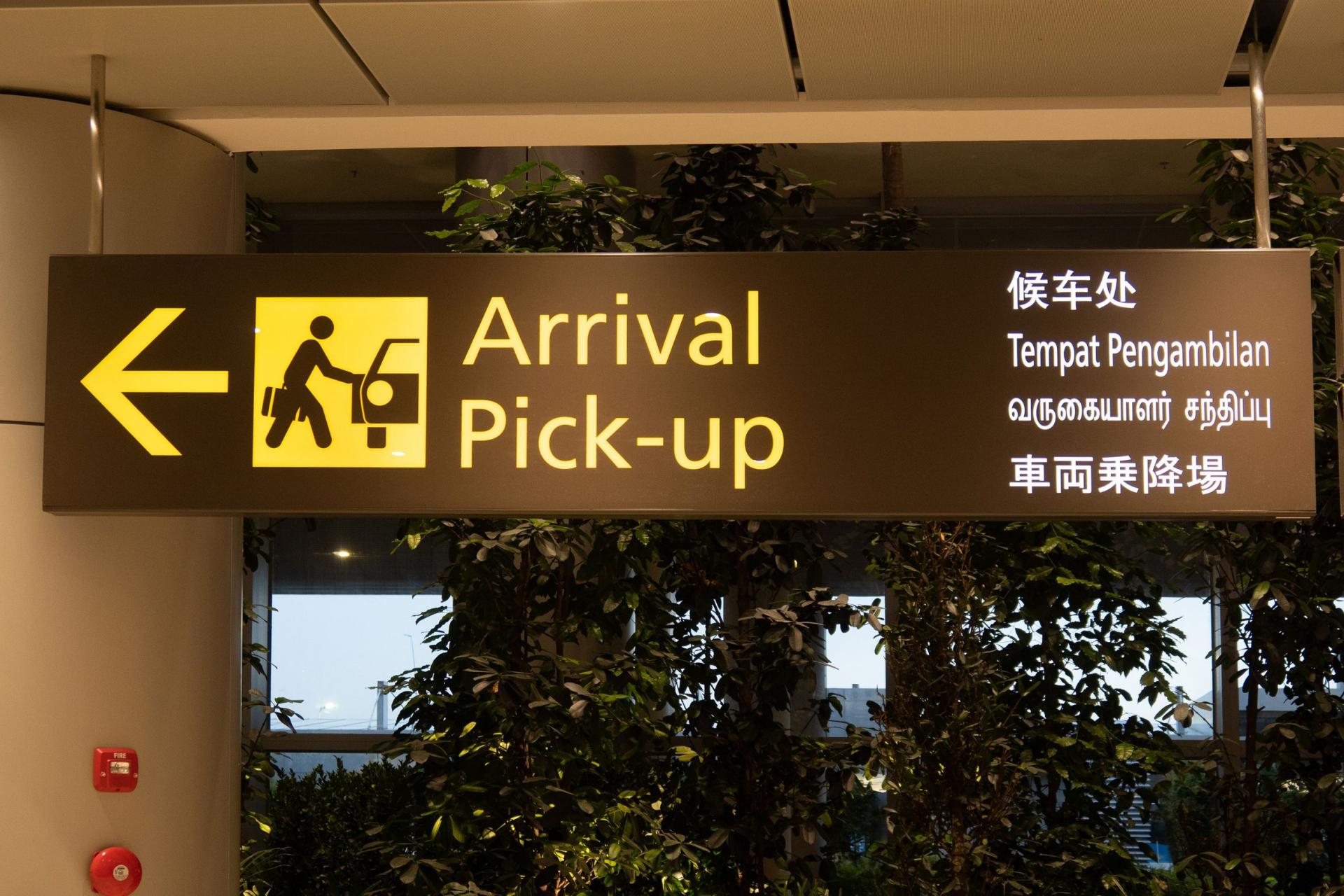
-
중국 - 상하이 푸둥 국제공항
이번에는 중국의 상하이 푸둥 국제 항으로 넘어가 보겠습니다. 중국 본토는 간체자(簡體字)라는 한자를 쓰고 있습니다. 간체자는 중국에서 자형(字形)을 간략하게 고친 한자를 일컫습니다. 간체자는 대만, 홍콩, 마카오에서 쓰는 번체자(繁體字)와 다른 모습을 하고 있습니다.
중국어와 영어가 병기된 사이니지입니다. 간체자와 영어 모두 비슷한 느낌이 나는 글자 획의 끝에 돌출된 형태가 없는, 산세리프(San-serif), 흔히 말하는 고딕 계열의 폰트로 되어있습니다.
-
대만 - 타오위안 국제공항
번체자를 쓰고 있는 대만의 타오위안 국제공항을 가보겠습니다. 보통 공공시설의 사이니지는 모든 언어를 산세리프 계열의 폰트를 쓰는 편인데 대만의 공항에서는 영어는 산세리프, 중국어는 명조 계열의 폰트를 썼습니다. 어떤 이유인지 궁금하네요. 아시는 분이 계신다면 언제든지 제보 부탁드립니다.

대중교통 사이니지
공항을 나와 이번에는 대중교통을 이용해 보겠습니다. 다양한 연령대의 사람들이 이용하는 대중교통수단의 사이니지는 군더더기 없이 명료해야 합니다. 또한 많은 사람이 이용하기 때문에 다양한 광고들을 보고 들을 수 있는 장소이기도 합니다.
-
싱가포르
보통 공공시설에는 유니버스, 헬베티카 같이 표정이 없어 보이는 산세리프 계열의 폰트가 종종 보입니다. 하지만 싱가포르의 버스와 지하철은 약간 달라 보이는데요, 사선으로 부드럽게 잘려있는 세로획들이 부드러운 인상을 만들어 주고 있기 때문일까요? 식물이 많은 나라여서 그런지 잘려있는 획들이 글자 사이에 자라난 잎사귀 같아 보이기도 합니다.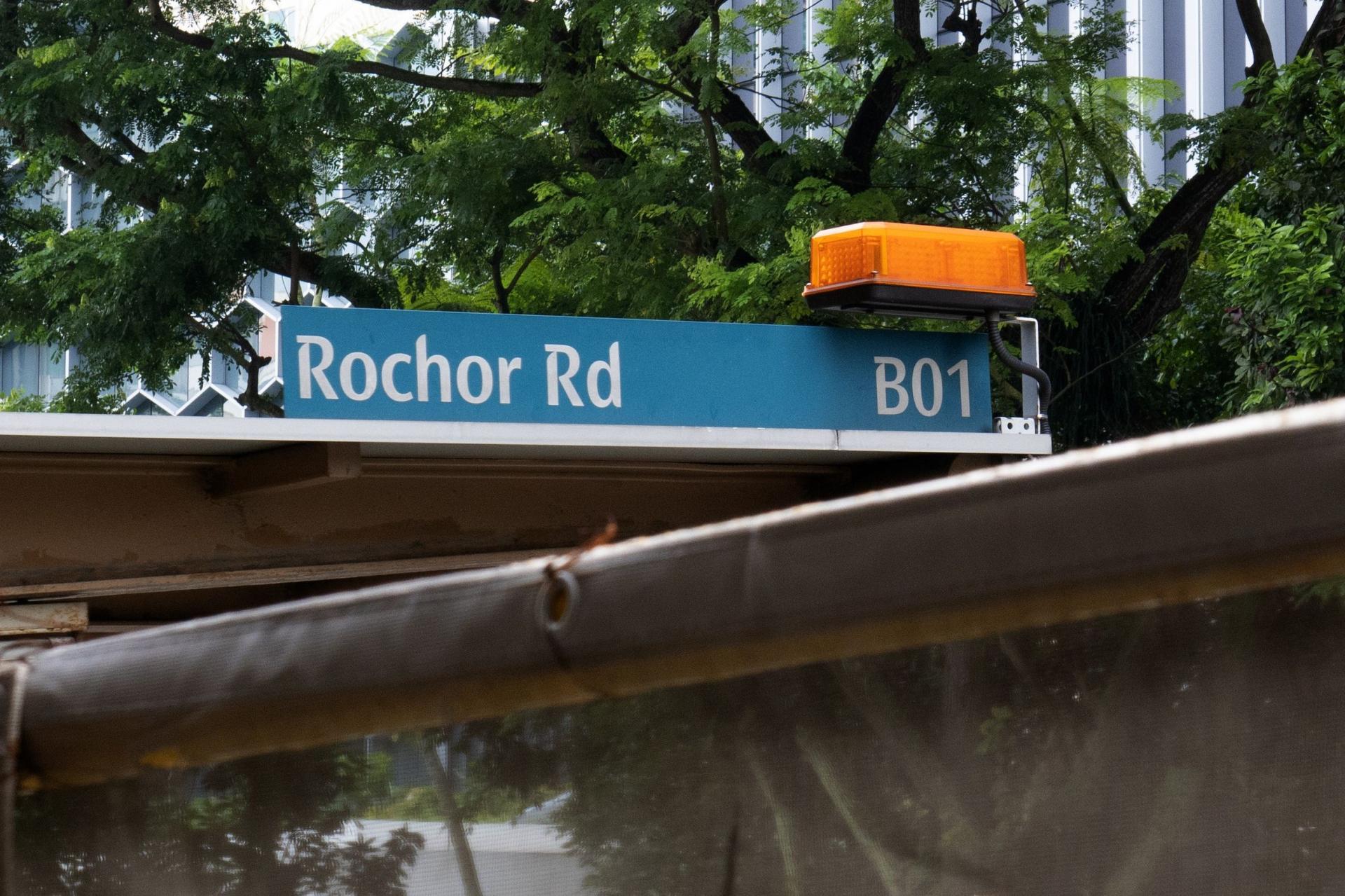 Rochor Rd 버스정류장.
Rochor Rd 버스정류장. 버스정류장의 영화 바비 광고.
버스정류장의 영화 바비 광고.
공항과 마찬가지로 지하철에서도 다국어로 쓰인 표지판들을 볼 수 있습니다. 4개의 언어로 쓰여진 보타닉 가든역.
4개의 언어로 쓰여진 보타닉 가든역. -
중국
상하이의 지하철역으로 가볼까요? 상하이 지하철역은 환승을 위해 기본적으로 10여 분을 걸어야 할 만큼 정말 큰 장소이기 때문에 곳곳에 커다란 승차 사이니지가 보입니다.
 유동인구가 많은 상하이의 인민광장역 19번 출구 앞.
유동인구가 많은 상하이의 인민광장역 19번 출구 앞.
쑤저우의 버스 간판입니다. 번화가나 유적지 주변의 버스정류장은 전통적인 느낌이 강한데 반해 일반 버스 정류장은 좀 더 단순해 보입니다.
 중국 진나라 시대에 만들어진 서법인 예서(隸書)체로 써져 있는 쌍탑(双塔)역.
중국 진나라 시대에 만들어진 서법인 예서(隸書)체로 써져 있는 쌍탑(双塔)역.
 쑤저우 버스 안의 입석 금지 구역. S와 T, A와 R의 사이 간격이 다른 글자들보다 약간 벙벙해인다.
쑤저우 버스 안의 입석 금지 구역. S와 T, A와 R의 사이 간격이 다른 글자들보다 약간 벙벙해인다.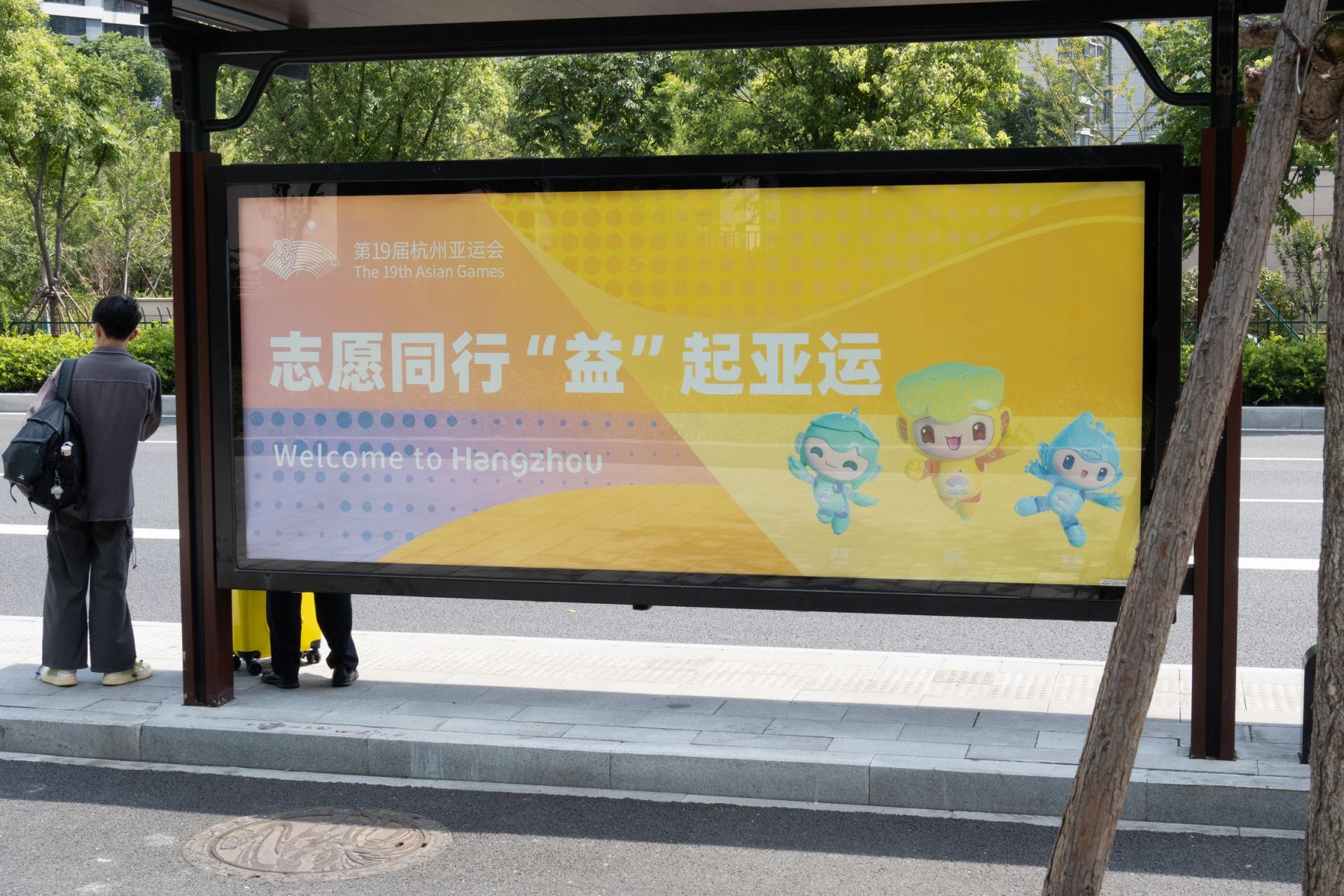 올해 9월에 열릴 항저우 아시안 게임을 홍보하고 있는 항저우의 버스 정류장.
올해 9월에 열릴 항저우 아시안 게임을 홍보하고 있는 항저우의 버스 정류장. -
대만
타오위안 공항처럼 한자는 명조 계열로, 영문은 세로 획과 가로획의 두께 차가 있는 산세리프로 적혀져 있습니다. 같은 한자여도 중국의 사이니지와는 사뭇 다른 느낌을 줍니다.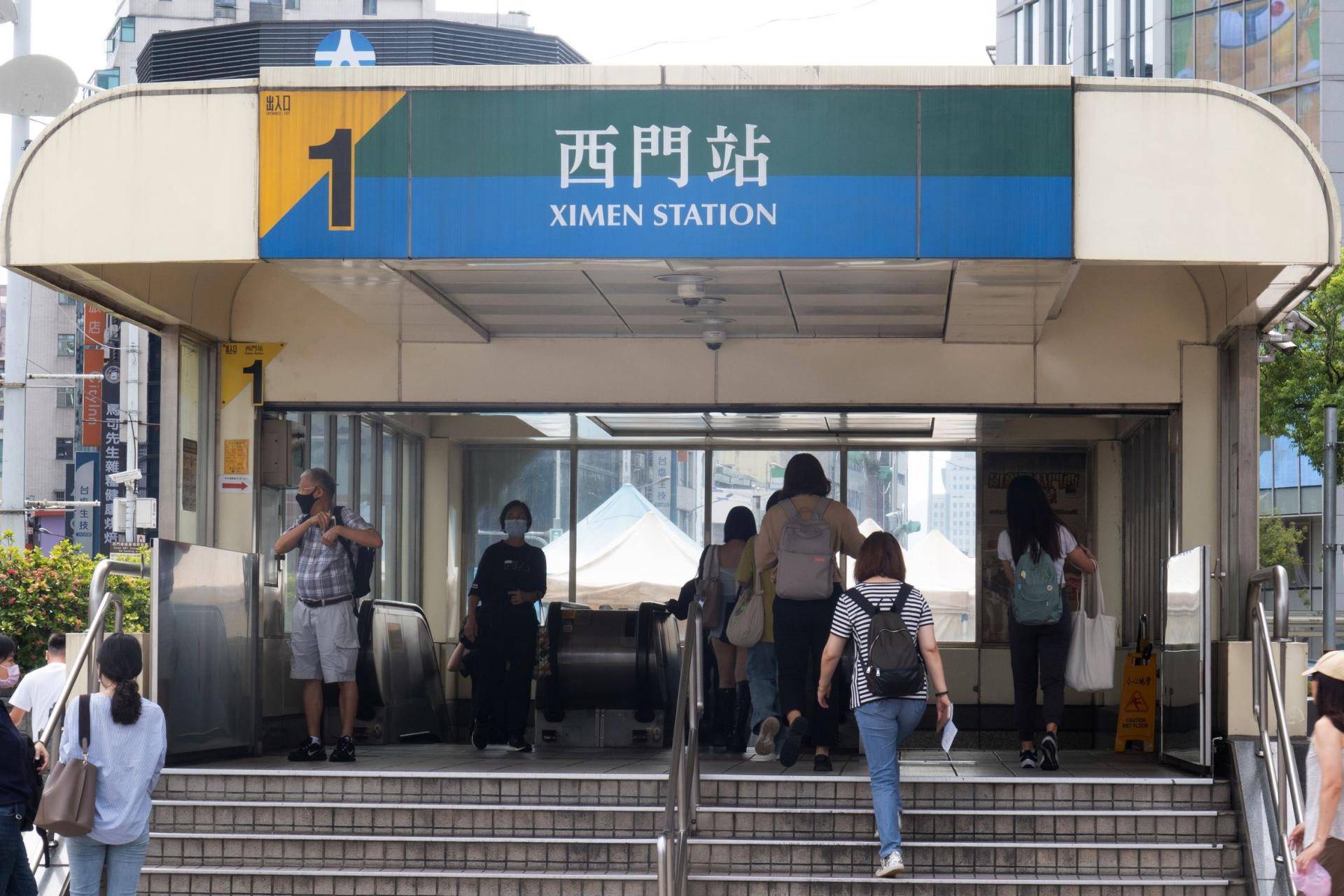 시먼역 1번 출구.
시먼역 1번 출구. R호선의 중정 기념당역. 해외 관광객이 많이 찾는 역은 표지판에 한글이 병기되어 있다.
R호선의 중정 기념당역. 해외 관광객이 많이 찾는 역은 표지판에 한글이 병기되어 있다. 전자잉크로 실시간 버스 도착시간을 알려주는 버스 정류장.
전자잉크로 실시간 버스 도착시간을 알려주는 버스 정류장.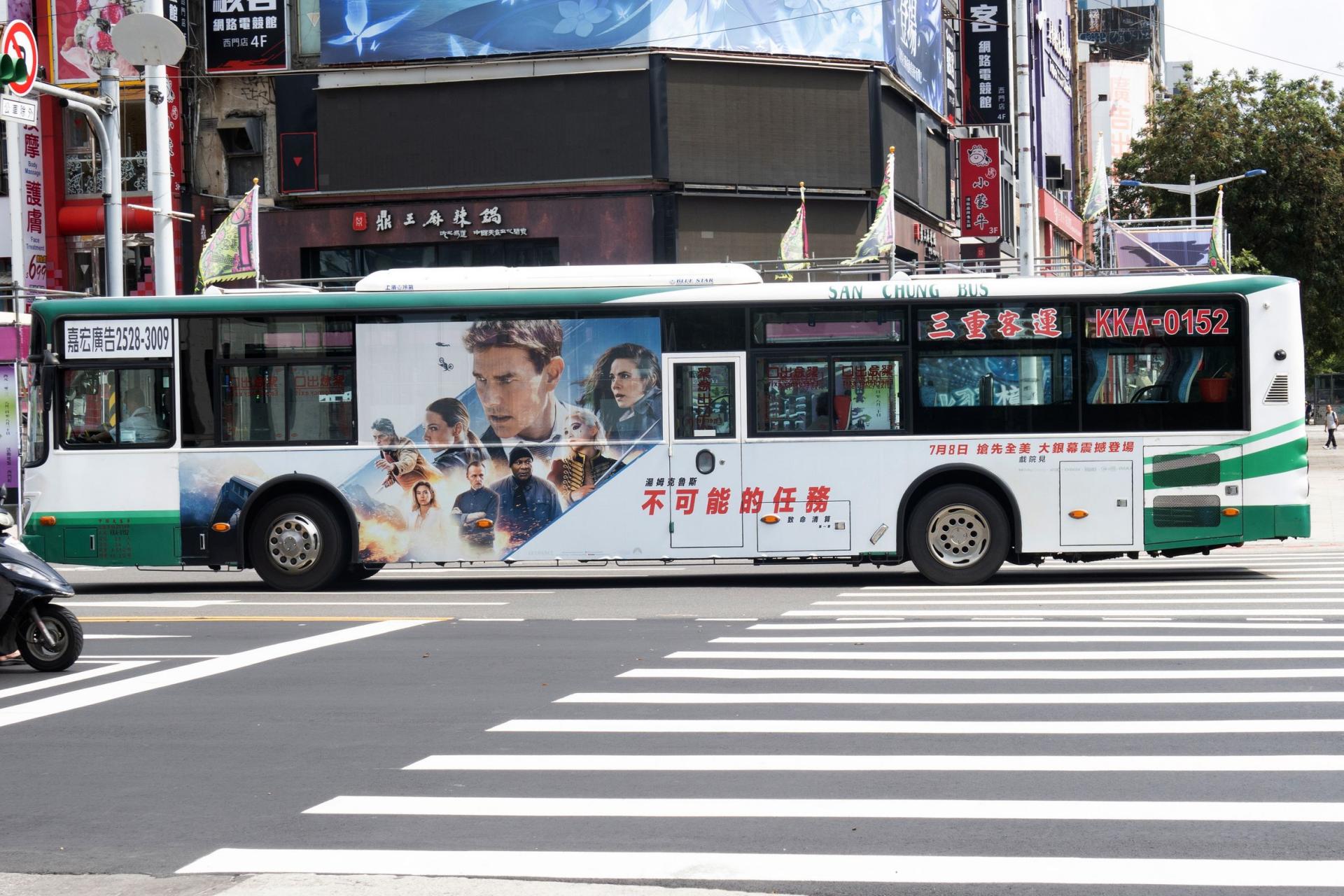 영화 미션 임파서블7의 버스 광고. 대만식 제목은 不可能的任务(불가능적 임무)이다.
영화 미션 임파서블7의 버스 광고. 대만식 제목은 不可能的任务(불가능적 임무)이다.
길거리 글자들
이번에는 버스에서 내려 길거리를 둘러보겠습니다. 길거리를 지나다 보이는 글자들을 유심히 봐보신 적이 있으신가요? 글자가 담고 있는 내용이 아닌 글자 자체의 형태를 음미해 본다면 매번 보던 간판들도 새롭게 느껴질 것입니다.
 싱가포르의 다국어로 된 간판. 사이니지에는 보통 하나의 언어가 크게 쓰인 뒤 다른 언어들이 그 의미를 통역해 주는 것처럼 작게 쓰이는 데 반해 공용어가 4가지나 되는 싱가포르에서는 모든 언어가 같은 크기로 쓰여 있는 경우가 많다.
싱가포르의 다국어로 된 간판. 사이니지에는 보통 하나의 언어가 크게 쓰인 뒤 다른 언어들이 그 의미를 통역해 주는 것처럼 작게 쓰이는 데 반해 공용어가 4가지나 되는 싱가포르에서는 모든 언어가 같은 크기로 쓰여 있는 경우가 많다.
 싱가포르 리틀인디아의 핸드폰 가게. 간판 왼쪽에는 타밀어가, 오른쪽에는 영어가 적혀있다.
싱가포르 리틀인디아의 핸드폰 가게. 간판 왼쪽에는 타밀어가, 오른쪽에는 영어가 적혀있다.
 싱가포르 차이나타운의 표지판. 영어 표지판 밑에 같은 크기의 중국어 표지판이 있다.
싱가포르 차이나타운의 표지판. 영어 표지판 밑에 같은 크기의 중국어 표지판이 있다.
 싱가포르 곳곳에 보이는 다국어 경고문.
싱가포르 곳곳에 보이는 다국어 경고문.
 좌) 중국의 영화 바비 포스터 우) 대만의 영화 바비 버스 광고. 芭比의 글자 디자인이 다르다.
좌) 중국의 영화 바비 포스터 우) 대만의 영화 바비 버스 광고. 芭比의 글자 디자인이 다르다.
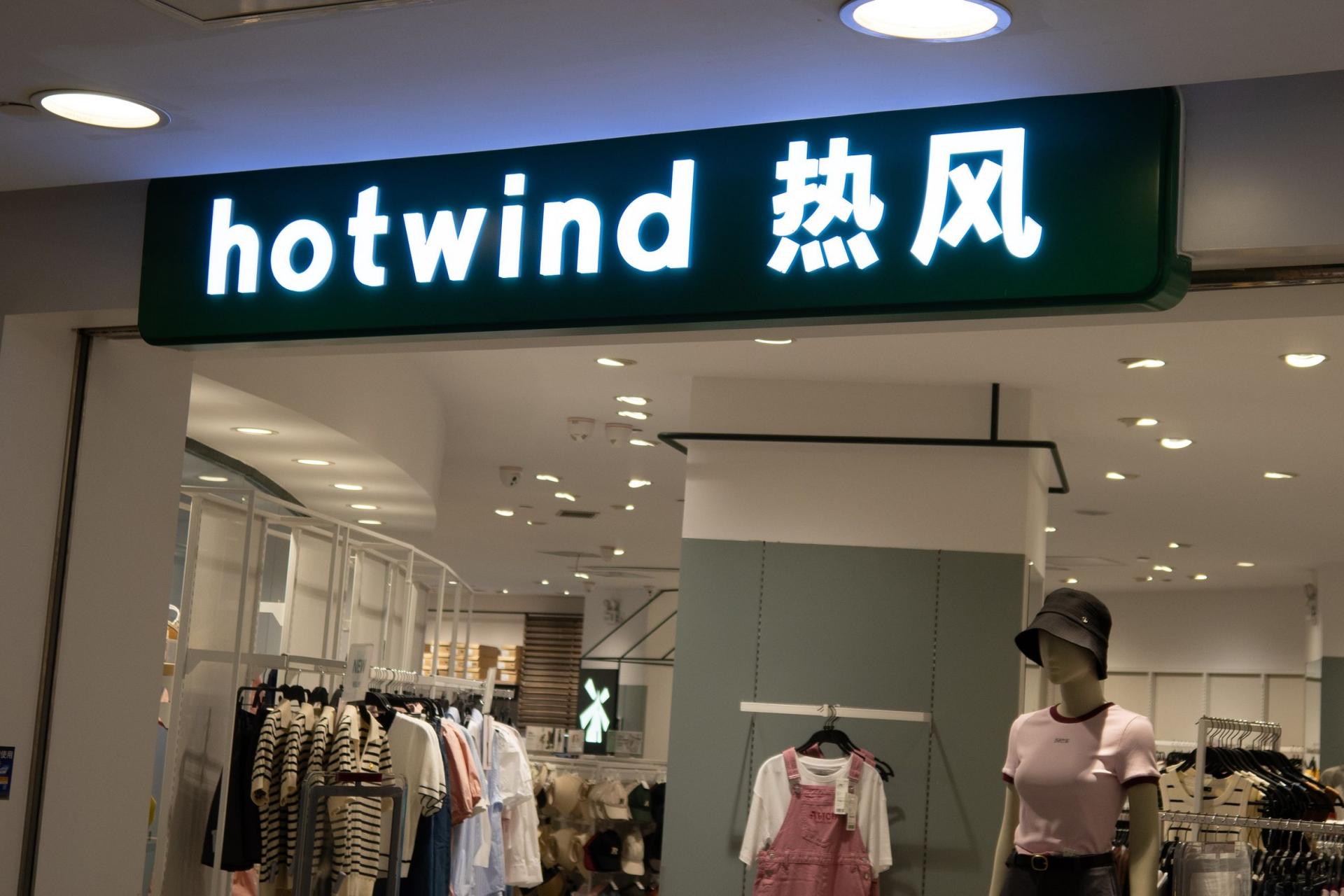 상하이의 한 옷가게. 뜨거운 바람을 뜻하는 热风(열풍)을 직역한 hot wind가 써져있다.
상하이의 한 옷가게. 뜨거운 바람을 뜻하는 热风(열풍)을 직역한 hot wind가 써져있다.
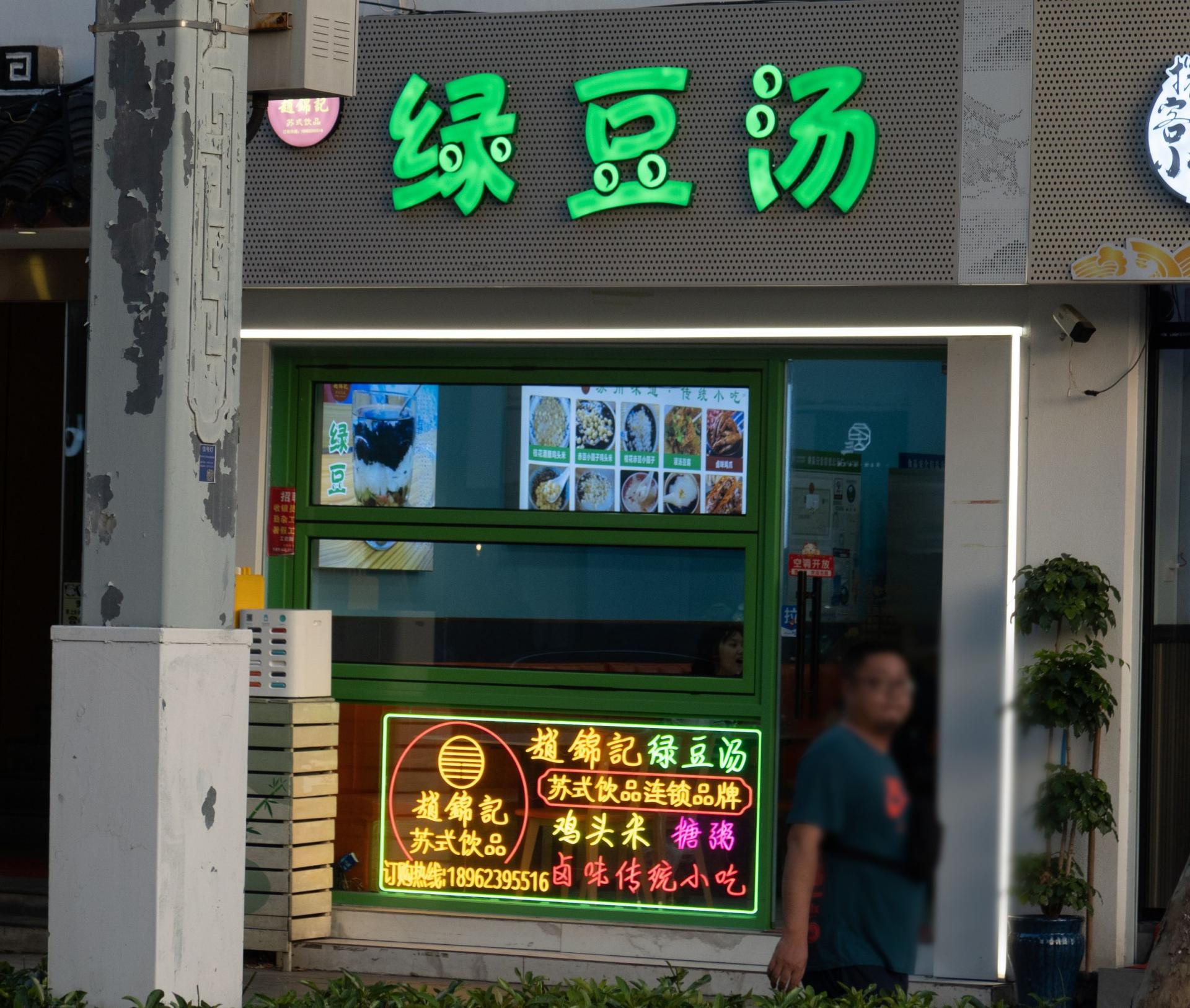 쑤저우의 녹두탕을 파는 가게. 녹두 모양으로 된 간판이 인상적이다.
쑤저우의 녹두탕을 파는 가게. 녹두 모양으로 된 간판이 인상적이다.
 대만의 소품샵 간판. 천천히 둘러보고 가라는 뜻(慢慢看)을 가진 가게.
대만의 소품샵 간판. 천천히 둘러보고 가라는 뜻(慢慢看)을 가진 가게.
 상하이 관광지에 있는 구조물.
상하이 관광지에 있는 구조물.
중화권 나라들을 여행하며 느끼는 큰 매력 중 하나는 붓글씨 기반으로 쓰인 한자들이 가게의 간판이나 공공시설물에 많이 보인다는 것입니다. 한국 기차역이나 간판을 비교해 생각해 보면 중화권의 열렬한 붓글씨 사랑은 저에게는 신기하게만 느껴집니다. 항저우에서 중국의 타입디자이너이자 말리카타입(링크)의 대표인 정초양씨를 만나 이에 관해 물어볼 기회가 생겼는데요, 초양씨는 중국인들은 붓으로 쓴 한자의 형태가 정통적이면서도 멋스럽다고 느끼기 때문에 지금까지도 간판이나 사이니지에 많이 사용된다고 설명해주셨습니다. 가슴이 뻥 뚫릴 만큼 시원시원하게 뻗어있는 한자의 획들을 볼 때마다 초양씨의 말에 동의하지 않을 수 없었습니다. 덧붙여서 중국 본토보다는 대만과 홍콩, 마카오에서 붓글씨로 된 사이니지를 만날 수 있다고 했는데 실제로 대만을 가보니 중국보다 더 많은 붓글씨를 접할 수 있었습니다.
 중국과 대만의 역 간판. 위에서부터 상하이역, 동 항저우역, 쑤저우역, 타이베이 메인 역.
중국과 대만의 역 간판. 위에서부터 상하이역, 동 항저우역, 쑤저우역, 타이베이 메인 역.
 싱가포르의 간판들. 중국어만 붓글씨로 써져있다.
싱가포르의 간판들. 중국어만 붓글씨로 써져있다.
 상하이의 랜드마크 동방명주(東方明珠)의 간판. 한자의 자획을 생략하여 약간 흘려쓰는 행서(行書)체로 쓰여져 있다.
상하이의 랜드마크 동방명주(東方明珠)의 간판. 한자의 자획을 생략하여 약간 흘려쓰는 행서(行書)체로 쓰여져 있다.
 상하이 중심가의의 쇼핑몰 간판들.
상하이 중심가의의 쇼핑몰 간판들.
 타이베이의 간판들.
타이베이의 간판들.
 타이베이 닝샤 야시장의 오래된 굴전 가게.
타이베이 닝샤 야시장의 오래된 굴전 가게.
낯선 길을 정처 없이 돌아다니다 보면 한국에는 없는 이색 경고문이 웃음을 자아내기도 합니다.
 싱가포르의 ‘한순간의 분노가 평생의 후회가 됩니다’ 경고문.
싱가포르의 ‘한순간의 분노가 평생의 후회가 됩니다’ 경고문.
 싱가포르 지하철의 두리안 금지 경고문.
싱가포르 지하철의 두리안 금지 경고문.
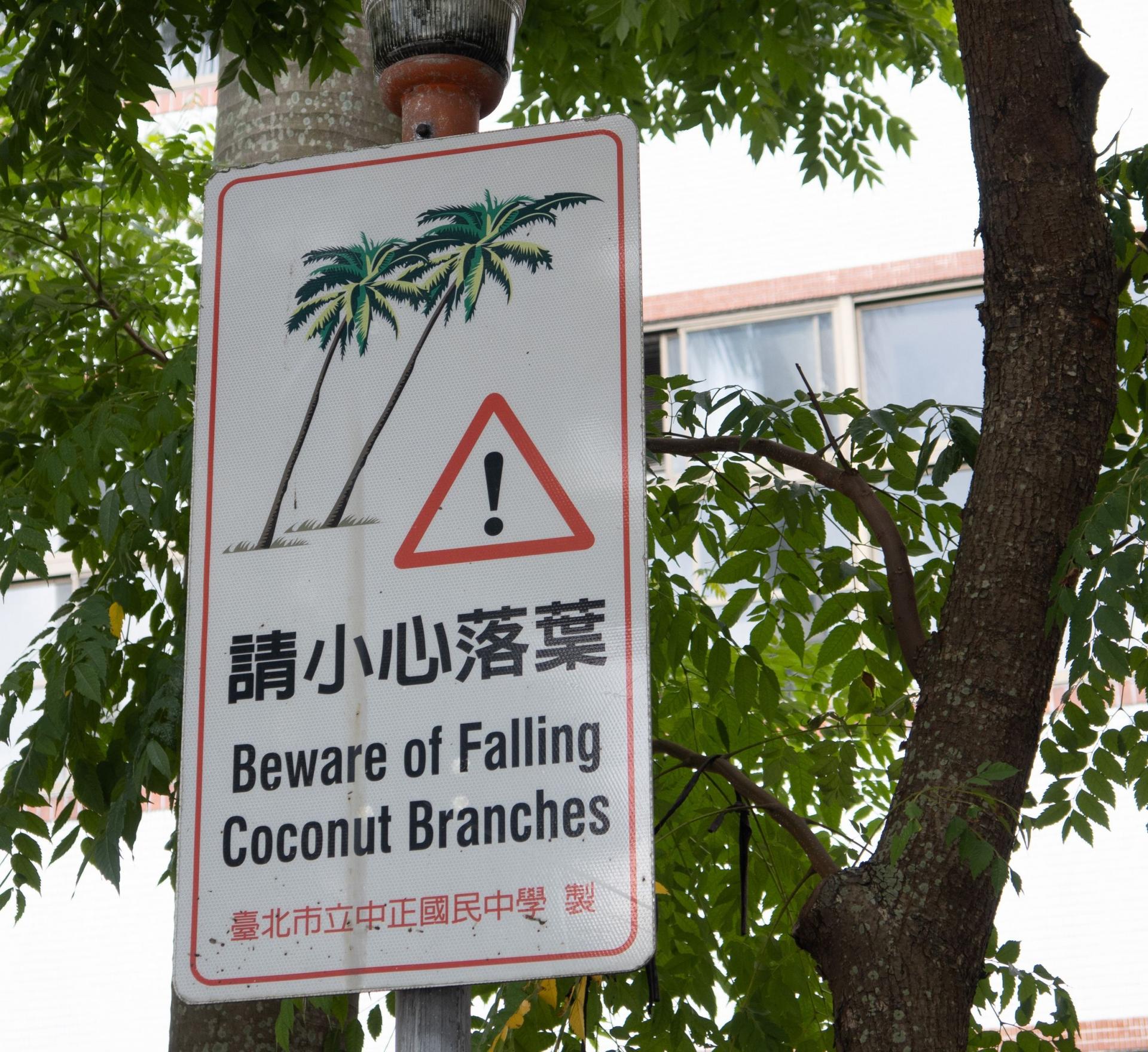 대만의 코코넛 추락 주의 경고문.
대만의 코코넛 추락 주의 경고문.
한국 글자들
해외에서 낯선 외국어들 가운데 한글을 만나면 한국인을 만나듯이 그렇게 반가울 수가 없습니다. 가끔 관광지에서 번역기가 쓴 것이 분명한 한국어는 볼 때마다 소소한 웃음마저 줍니다. 한글을 볼 때마다 한글이 외국인에게 주는 이미지는 무엇이며 왜 이런 폰트를 선택했는지 등을 곰곰이 생각하며 한글을 뜯어보다 보면 한참이나 글자 앞에 서 있게 됩니다.
 싱가포르 쇼핑몰에 있는 삼성 갤럭시 플립 광고.
싱가포르 쇼핑몰에 있는 삼성 갤럭시 플립 광고.
 상하이의 북한식 음식점.
상하이의 북한식 음식점.
 상하이의 대한민국 임시정부 유적지.
상하이의 대한민국 임시정부 유적지.
 쑤저우 관광지에 있는 한글.
쑤저우 관광지에 있는 한글.
 대만 고궁박물관의 매표 기계. 중국어, 영어, 일본어 그리고… 한국인.
대만 고궁박물관의 매표 기계. 중국어, 영어, 일본어 그리고… 한국인.
마무리하며
해외여행을 하다 보면 읽지도, 알아듣지도 못하는 외국어에 때로는 막막하고 답답하기도 합니다. 길을 잃을까 노심초사 구글 지도를 뚫어지게 보던 고개를 들어 찬찬히 거리를 둘러보세요. 우리는 글자를 읽거나 이해하지 않고도 글자 자체의 형태를 관찰하는 것만으로도 새로운 세계를 마주할 수 있습니다. 어쩔 땐 유명 관광지보다 평범한 길거리에서 마주치는 낯선 문자들이 그 나라를 더 많이 보여주기도 합니다. 길을 잃어버려도 괜찮습니다. 나중에 되돌아보면 여행의 즐거운 추억거리가 될 테니까요.

작성자: 산돌 타입디자인팀 김연아